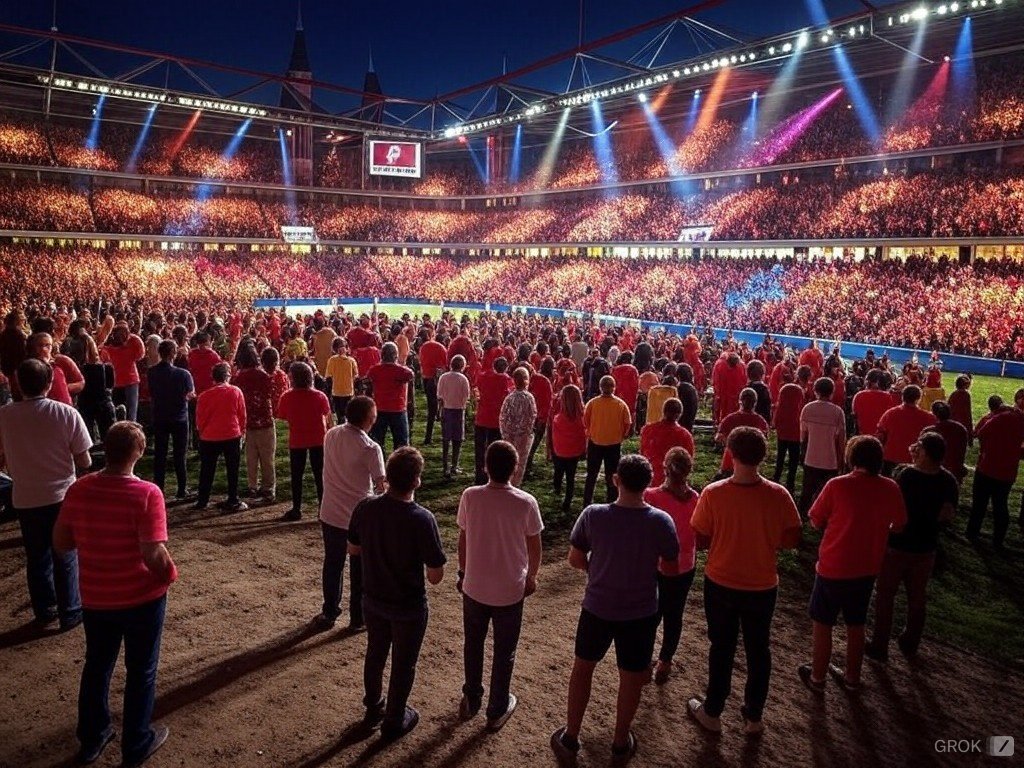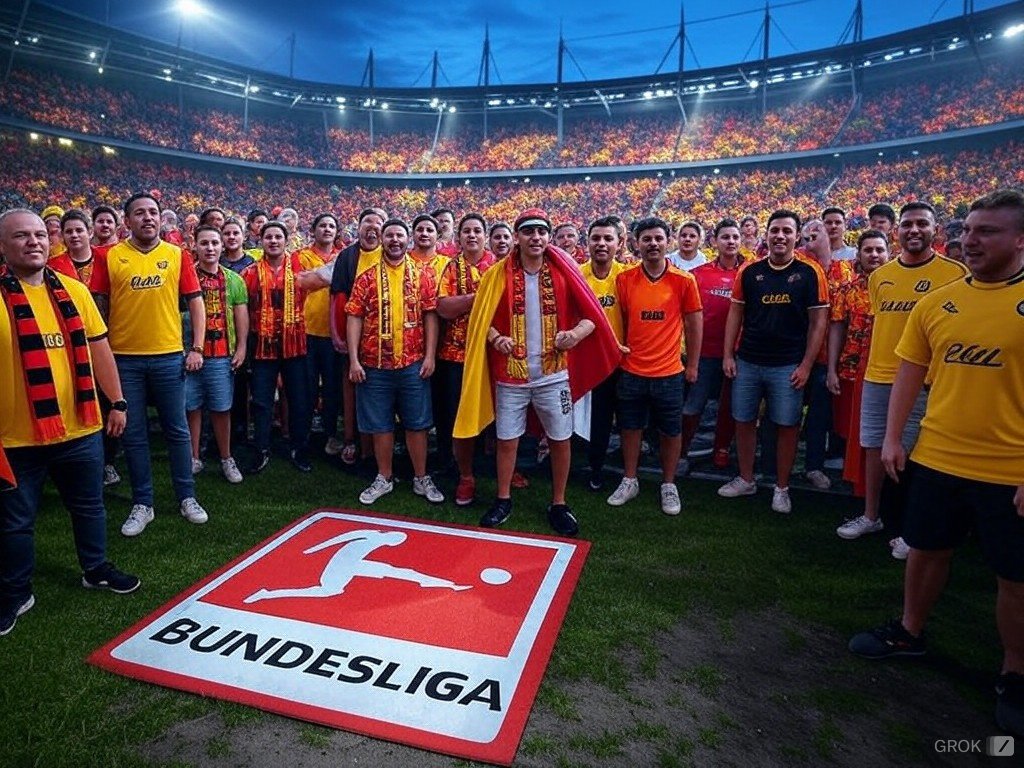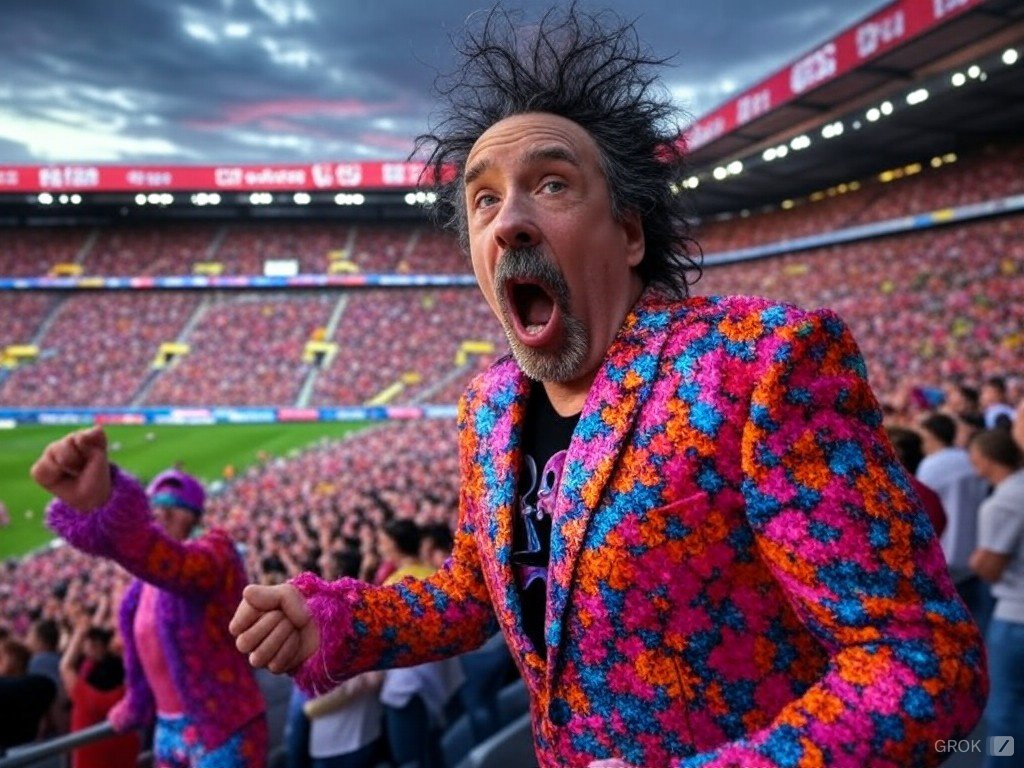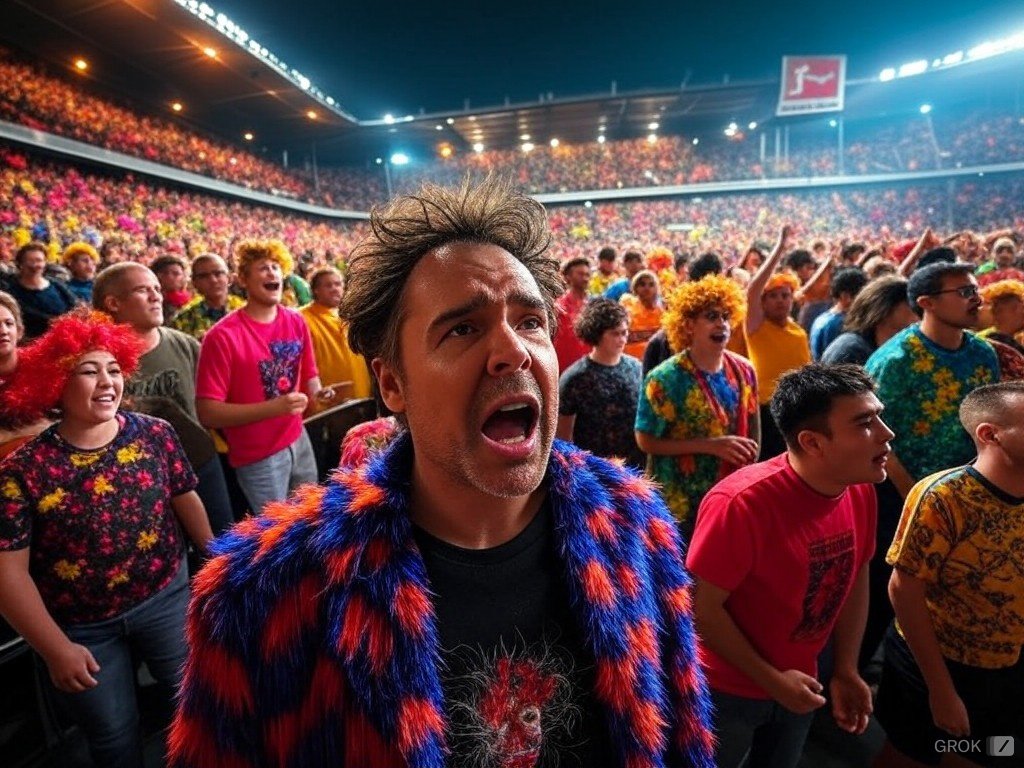
Introduction to German Soccer Culture
Germany’s soccer culture is a phenomenon that pulses through the heart of the nation, embodying a fervor that binds its people together. Soccer in Germany is not merely a pastime; it is a cornerstone of daily life that bridges generations and knits communities. This deep-seated passion is most prominently showcased by German sports teams, whose loyal supporters are the lifeblood of the sport.
In cities across Germany, the anticipation for game day is palpable. Streets are awash with team colors, and the buzz of pre-match excitement fills the air. Families and friends gather, whether at homes or local pubs, to partake in the shared experience of watching their beloved teams. This communal spirit is a testament to the unifying power of soccer.
The dedication of German soccer fans is evident not just on game days, but throughout the week. Discussions about team strategies, player performances, and upcoming matches are commonplace in everyday conversation. It’s a topic that transcends age and background, offering a common ground for everyone to connect over. The level of engagement and emotional investment seen in Germany is truly something special.
The essence of German soccer culture can be seen in the way fans support their teams through thick and thin. Whether celebrating a championship victory or lamenting a tough loss, the loyalty remains unwavering. This kind of devotion creates a sense of belonging that extends far beyond the 90 minutes on the pitch.
In comparison, American sports enthusiasts will find familiar elements in this fervor. Much like tailgating before a big NFL game or gathering to watch the World Series, the rituals and traditions of German soccer fans foster a sense of community and shared purpose. It’s in these moments that the universal language of sports shines through, highlighting the similarities in how we cherish our favorite teams and the joy they bring into our lives.
Germany’s soccer culture, rich with history and emotion, stands as a powerful testament to the impact of sports on society. Through the lens of soccer, we witness a nation united by passion, and in that unity, we find a reflection of our own experiences as sports fans.

Atmosphere in German Stadiums
Stepping into a German soccer stadium is like entering a realm of collective emotion. The atmosphere is electric, fueled by the deep loyalty and spirited chants of thousands of fans. In the Bundesliga, the average attendance is remarkable, with over 45,000 fans packing the stands each game during the 2011–12 season, making it one of the most attended leagues globally, second only to the American National Football League (NFL). This speaks volumes about the incredible draw that these matches have for spectators.
German stadiums are known for their affordability, offering some of the lowest ticket prices among Europe’s major leagues. This accessibility ensures that fans of all backgrounds can partake in the shared euphoria of game day. In contrast, American sports like the NFL and Major League Baseball (MLB) often boast an energetic atmosphere, with spirited fans engaging in cheers and rituals. However, the sheer scale and passion of Bundesliga supporters create an unmatched experience that resonates deeply with those who witness it.

Fan Engagement and Community Connections
German soccer teams have a special bond with their local communities, fostering a sense of belonging that transcends the sport itself. These teams often collaborate closely with local businesses, creating partnerships that grow alongside their communities. For instance, Bayern Munich receives a substantial portion of its revenue—about 55%—from corporate sponsorships, many of which are deeply rooted in the local economy. This symbiotic relationship highlights how Bundesliga clubs contribute to the economic and social fabric of their communities.
The sense of community extends to fan engagement as well. Clubs frequently organize events that bring fans together, such as meet-and-greets with players, charity matches, and local festivals. This fosters a family-like atmosphere where fans feel directly connected to their teams. It’s common to see players participating in local activities, further cementing this bond.
In comparison, American sports franchises also strive to engage their communities. NFL and MLB teams often support local causes and events, hosting charity drives and community outreach programs. These efforts help build a strong rapport between the team and its fans, highlighting the important role sports play in societal cohesion.
German soccer fans are renowned for their dedication, and this is evident in the way they support local initiatives. Fan clubs often take part in community projects, volunteer work, and social causes, embodying the spirit of solidarity that defines German soccer culture. This level of involvement ensures that the connection between the club and the community remains strong and meaningful.
American sports fans will find this aspect familiar, as many supporters of NFL and MLB teams also actively participate in local community efforts. Tailgating, for example, isn’t just about preparing for the game; it’s also a social gathering that strengthens community bonds. These pre-game rituals offer fans a chance to connect with one another, share their passion, and build lasting relationships.
The engagement between German soccer teams and their communities exemplifies the profound impact sports can have beyond the field. Whether through economic contributions, social initiatives, or simply bringing people together, the relationship between a team and its fans is a powerful force that unites and uplifts. This sense of connection is a cornerstone of both German and American sports cultures, reflecting the shared human experience of belonging and camaraderie.

Weekly Thrills of the Bundesliga
The Bundesliga captures the essence of excitement week after week, making it a constant source of joy for its devoted fans. The league’s schedule ensures that every weekend is filled with intense matchups and heart-stopping moments, keeping supporters eagerly anticipating the next game. Whether it’s a nail-biting finish or a stunning goal, the thrills of Bundesliga soccer are relentless, providing an emotional rollercoaster that binds fans together.
In many ways, this weekly excitement mirrors the build-up and fervor surrounding major American sports events, yet it happens regularly, not just once a year. Imagine the anticipation and communal energy of the Super Bowl, but happening every week. That’s the magic of the Bundesliga. Fans gather with loved ones, donning their team colors and singing their anthems, creating a shared experience that transcends the sport itself.
The unpredictable nature of the matches means that every game has the potential to become a memorable event. Upsets and surprises are common, ensuring that fans remain engaged and invested in their teams’ fortunes. This level of unpredictability contributes to the league’s charm, making each game a must-watch event. Supporters come together, whether at home or in local pubs, to witness the unfolding drama and to celebrate or commiserate together.
This sense of shared experience is akin to tailgating before an NFL game, where fans create an atmosphere of camaraderie and anticipation. In Germany, the pre-match rituals and gatherings are a testament to the deep-rooted passion for soccer. Families and friends bond over the game, sharing stories and building traditions that are passed down through generations.
The Bundesliga’s unique structure also contributes to its allure. Unlike some leagues that are dominated by a few powerhouse teams, the Bundesliga offers a competitive balance that ensures a wide array of matchups are compelling. This diversity keeps the league fresh and engaging, giving fans from all backgrounds something to cheer for.
The heart of Bundesliga fandom lies in its weekly routine, a cycle of excitement and emotional investment that never wanes. The fans’ unwavering support and the league’s thrilling nature make every matchday a special occasion, a celebration of the sport and the community it fosters. For anyone who cherishes the emotional highs and lows of sports, the Bundesliga offers a uniquely exhilarating experience that resonates deeply with its followers.

Traditions and Rituals in German Soccer
German soccer is rich in traditions that add a unique layer of depth to the fan experience. Each team has its own set of customs that create a sense of continuity and belonging. Take, for example, the famous “Yellow Wall” of Borussia Dortmund. This section of the stadium is home to some of the most passionate and vocal fans in the world. Their synchronized chants, songs, and even choreographed displays turn every match into a spectacle of unity and devotion.
One of the most touching traditions is the pre-game march to the stadium. Fans gather at designated spots around the city and walk together, singing and chanting in unison. This ritual builds a sense of anticipation and camaraderie that sets the tone for the game. It’s not just about watching soccer; it’s about participating in something much larger.
Inside the stadium, the atmosphere is further amplified by the coordinated efforts of fan clubs. These groups take pride in creating an environment that intimidates the opposition while uplifting their own team. From waving massive flags to setting off smoke bombs (safely, of course), the visual and auditory experience is unlike any other.
Similar to American tailgating, German soccer fans also have their own pre-game rituals. Instead of parking lot gatherings, many fans head to local pubs or beer gardens near the stadium. Here, they discuss tactics, share a meal, and enjoy a few drinks before heading to the match. This pre-game socializing is an integral part of the game-day experience, making the event feel like a community celebration.
Another cherished tradition is the singing of team anthems. Each club has its own song, and when thousands of voices join together, the result is a spine-tingling moment that resonates deeply with everyone present. These anthems are more than just songs; they are an expression of loyalty and love for the team.
In addition to these in-stadium rituals, fans often participate in community events organized by the club. Whether it’s charity runs, holiday celebrations, or even youth soccer clinics, these activities strengthen the bond between the team and its supporters. The involvement of players in these events makes the connection even more personal and heartfelt.
German soccer traditions go beyond mere fandom; they are a way of life that brings people together in a shared experience of joy, anticipation, and sometimes heartbreak. Each ritual, from the pre-game march to the singing of anthems, contributes to a rich tapestry that makes being a soccer fan in Germany an incredibly special experience.

Global Impact and Attraction
German soccer’s reach extends beyond national borders, captivating fans from all corners of the globe. The Bundesliga’s success isn’t just built on the talent displayed on the field but also on the financial stability of its clubs. These clubs operate under stringent financial regulations, ensuring their long-term stability and preventing financial mishaps. These regulations, akin to the UEFA Financial Fair Play, require clubs to apply for a license each season, safeguarding their financial health and allowing them to maintain a strong presence on the global stage.
This financial prudence has helped Bundesliga teams become global ambassadors for German soccer culture. Clubs like Bayern Munich and Borussia Dortmund have established fan bases that stretch far beyond Germany, drawing supporters from various continents. The international reach of these teams is evident in their preseason tours, which often include matches in Asia, North America, and beyond. These tours serve as a bridge, connecting global fans to the heart of German soccer and fostering a sense of shared enthusiasm.
In contrast, American sports like the NFL and MLB have a different global footprint. While these leagues enjoy significant international recognition, their influence often remains more concentrated within the United States. The Super Bowl, for instance, attracts viewers worldwide, but its cultural impact is predominantly felt in America. Despite this, both American and German sports have managed to cultivate devoted global followings. The universal appeal of athletic competition and the passion it inspires knows no boundaries.
German soccer’s global impact is also reflected in the influx of international players and coaches who bring diverse styles and perspectives to the Bundesliga. This internationalization enriches the league, making it a melting pot of talent and cultures, further enhancing its global appeal.
Whether it’s the Bundesliga’s methodical financial approach or the vibrant international fan base it nurtures, German soccer demonstrates a model of sustainability and widespread attraction. This global connection reinforces the idea that sports, at their core, are a universal language that unites us, no matter where we are in the world.
